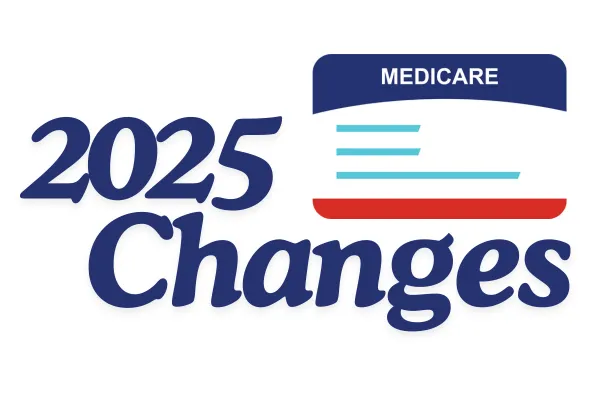
2025 Changes to Medicare Part D: What You Need to Know & Why You Should Act Now!
2025 Changes to Medicare Part D: What You Need to Know & Why You Should Act Now!
Big changes are coming to Medicare Part D in 2025, and if you rely on prescription drug coverage, these updates could significantly impact your healthcare costs. Whether you’re already enrolled or just exploring your options, the 2025 changes are designed to improve affordability, but they also make it more crucial than ever to evaluate your Medicare plan during this year’s Annual Enrollment Period (AEP), which runs from October 15 to December 7, 2024.
Let’s dive into what’s changing, what to watch out for, and why it’s important to take action now.
What’s Changing in 2025?
Medicare Part D is getting a serious overhaul in 2025, with the goal of reducing out-of-pocket costs for beneficiaries. Here’s a breakdown of the key changes:
The $2,000 Cap on Out-of-Pocket Costs
For the first time ever, there will be a $2,000 out-of-pocket maximum for prescription drugs under Medicare Part D. Currently, there’s no cap, which means that high-cost prescriptions can leave you with hefty bills. Starting in 2025, once you’ve spent $2,000 on your medications, you will be covered for the remainder of the year as long as your medications on ON FORMULARY.
Why It Matters:
This cap is especially important if you take expensive or multiple prescriptions. The new limit could save you thousands of dollars.
No More Coverage Gap (“Donut Hole”)
The infamous Medicare Part D "donut hole" is officially disappearing in 2025. Right now, after reaching a certain threshold in drug costs, you enter the coverage gap, which requires you to pay a higher percentage of your drug costs until you reach catastrophic coverage. But come 2025, that gap will be gone.
Why It Matters:
Your drug costs will be more consistent throughout the year, making it easier to budget.
No more worrying about suddenly paying more for your prescriptions in the middle of the year.
Expanded Access to Low-Income Subsidies
Medicare’s Extra Help program is also expanding in 2025. This program helps low-income beneficiaries with premiums, deductibles, and copayments. Starting in 2025, more people will qualify for Extra Help, thanks to higher income limits.
Why It Matters:
If your income was previously just above the cutoff, you may now qualify for this valuable assistance.
Even a small reduction in out-of-pocket costs can make a big difference for those on a fixed income.

The New Medicare Prescription Drug Payment Plan
Another big change is the introduction of the Medicare Prescription Drug Payment Plan, which is designed to make paying for high-cost drugs more manageable.
How It Works:
Instead of paying the full cost of expensive medications up front, you’ll now have the option to spread out your out-of-pocket costs over the year. This means smaller, more manageable payments at the pharmacy.
Benefits of the Payment Plan:
Helps those on a fixed income avoid big one-time payments at the pharmacy counter.
Works in tandem with the $2,000 cap, so once you hit that threshold, you won’t owe any more for the rest of the year.

Shifting Formulary Tiers: What You Need to Know for 2025
One important thing to keep an eye on is the shifting of drugs within formulary tiers in both Medicare Advantage Plans and Prescription Drug Plans. A plan’s formulary determines which medications are covered and how much they will cost.
Understanding Formulary Tiers:
Tier 1: Preferred generic drugs—typically the least expensive.
Tier 2: Non-preferred generic drugs—costs are higher than Tier 1.
Tier 3: Preferred brand-name drugs—moderate copayments.
Tier 4 and Tier 5: Non-preferred brand-name and specialty drugs—these have the highest out-of-pocket costs.
Why It Matters:
Drugs can move between tiers each year, which means that a medication you’ve been paying a lower price for could jump to a higher tier, increasing your costs.
Conversely, some drugs might move to a lower tier, which could save you money in 2025.
What You Should Do:
Check your plan’s 2025 formulary during the Annual Enrollment Period to see if your prescriptions are moving to different tiers.
If a drug you take is moving to a higher tier, it might be time to look for better coverage.

Why You Should Act Now During the 2024 Annual Enrollment Period
With all these changes, October 15 to December 7, 2024, is your golden opportunity to review your Medicare plan for 2025. The updates to Medicare Part D could save you a lot of money, but only if you’re in the right plan.
Here’s what to do:
Review Your Current Plan
Check if your prescriptions are still covered and whether they’re moving to a different tier.
Make sure your plan takes full advantage of the new $2,000 out-of-pocket cap and other updates.
Compare Plans
Speak to a licensed agent to see if a different plan might be better for you or review Medicare.gov or call Medicare.
Look at total costs, including premiums, deductibles, and drug costs, to ensure you’re maximizing your savings.
Check if You Qualify for Extra Help
The Extra Help program is expanding, so even if you didn’t qualify before, check again to see if you’re eligible for assistance with premiums and copayments.




